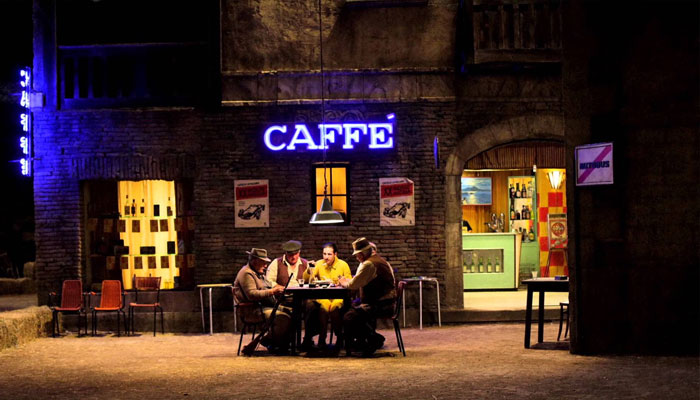Most well-known feature directors who dabble in commercial work create spots for a wide, seemingly-random variety of brands and products. Either a given brand wants that director specifically, or the director just happened to turn in the best bid. Others, like director Wes Anderson, tend to specialize within a particular niche. Anderson’s niche seems to be luxury goods and lifestyle brands– Stella Artois, American Express, Softbank, etc. Hot off the success of his feature MOONRISE KINGDOM (2012), Anderson was approached by luxury fashion giant Prada to bring his unique vision to their marketing efforts. Instead of the traditional television advertisement, however, Anderson created a pair of short works that would help fuel the rise of a wild new frontier in the marketing field: branded content.
CANDY (2013)
The first piece, CANDY, tells a single distinct story over the course of three short episodes. Like most fashion films, the story is exceedingly scant in favor of the aesthetics. Anderson created the piece with his THE DARJEELING LIMITED (2007) co-writer Roman Coppola, and cast emerging French starlet Lea Seydoux as the titular Candy: an attractive, stylish blonde who finds herself thrust between two squabbling brothers as they compete for her attention. Presented entirely in French with English subtitles, CANDY allows Anderson to indulge in the Europhilic affectations that strings his body of work together– right down to the use of French art rock over the soundtrack. Pretty much all of Anderson’s technical hallmarks are present: whip-pans, lateral dolly movements, centered and balanced compositions, and a timeless, eclectic approach to production design. The rivalry between the two brothers is a vintage Anderson-ian theme, with the off-kilter family dynamic serving as the engine that drives the story.
CASTELLO CAVALCANTI (2013)
Anderson’s other Prada work made during this period is CASTELLO CAVALCANTI, and befitting the “branded content” label, it presents itself much more as a short film than any sort of ad. The fact that Anderson chooses to present the piece as an American Empirical production further confirms his narrative intentions. The piece is the Italian cousin to Anderson’s other European short, the France-set HOTEL CHEVALIER (2007). Both works star frequent performer Jason Schwartzman, with CASTELLO CAVALCANTI casting him as a worldly, adventurous young American racer who encounters his Italian ancestors after accidentally crashing his race-car within the confines of the village his family came from.
Shot by veteran cinematographer Darius Khondji with anamorphic lenses in the 2.35:1 aspect ratio, CASTELLO CAVALCANTI sees something of a return to classical form for Anderson after a series of works that experimented with the preening, miniaturized nature of his style. The compositions are expectedly flat, with Anderson’s subject slugged front and center into the frame. The use of whip-pans and lateral, two-dimensional camera movements conveys the director’s signature sense of cross-sectioned tableaus, while a red and yellow checker pattern becomes a recurring visual motif that evokes an international sense of graphic design consistent with his fascination for European art and culture. There’s a heavy layer of Old World charm to CASTELLO CAVALCANTI, thanks to its 1950’s period setting and the vintage set dressings, costumes, and vehicles that go with it.
Like Prada’s CANDY, CASTELLO CAVALCANTI tells only the barest sketch of a story. As branded content, its focus is instead placed on the romanticized visuals and subtle placement of Prada branding. That being said, CASTELLO CAVALCANTI is a confident, solid effort from Anderson, and out of all of the director’s short-form works, his vision here would undoubtedly make for an excellent, full-fledged feature film.
